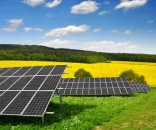
Probe of solar imports from Southeast Asia may cost US 17.5GW new capacity
The probe involved imports from Cambodia, Malaysia, Thailand, and Vietnam.
An investigation launched by the United States on solar panels imported from Southeast Asia threatens some 17.5 gigawatts of acquisition contract (GWac) from planned solar capacity installations in 2022.
This comes amidst concerns of solar companies in the US that Chinese manufacturers use cheap raw materials and shift cell and panel assembly to Southeast Asia to go around the ban on imports from China.
“In an attempt to limit cheap Chinese solar panels entering the market from Southeast Asia, and with one eye on the goal of shoring up a domestic supply chain, the US has seriously dented its solar capacity forecast for 2022 and beyond,” Marcelo Ortega, renewables analyst with Rystad Energy, said.
“This could be the most disruptive event ever to face the US solar industry.” The pending investigation that froze imports of solar cells and panels could lead to annual capacity additions to plunge 10.7GWac this year from 22.6GWac last year, Rystad Energy projected.
The Department of Commerce is zeroing in on four Southeast Asian countries, particularly, Cambodia, Malaysia, Thailand, and Vietnam.
These four countries have played a key role in the US market, accounting for 85% of all solar panel capacity that entered the US in 2021 with 21.8GWac. This went up to 99% in January and February 2022.
Rystad Energy also noted that even before the antidumping probe on solar imports, the solar power industry of the US is already under pressure after more than 7GWac of solar PV was delayed for over six months last year.
“[This was] due to high commodity prices, federal tax credit uncertainty and unfavorable policies,” the report read in part.
Amongst these include the US government’s move to ban imports from China’s northwest region of Xinjiang due to reported human rights abuses committed against the Uyghur people.
“With 40% of the world’s silicon production based in Xinjiang, this policy effectively halved the number of panels that can be imported to the US, disrupting the already ropy supply chain,” Rystad noted.













 Advertise
Advertise











